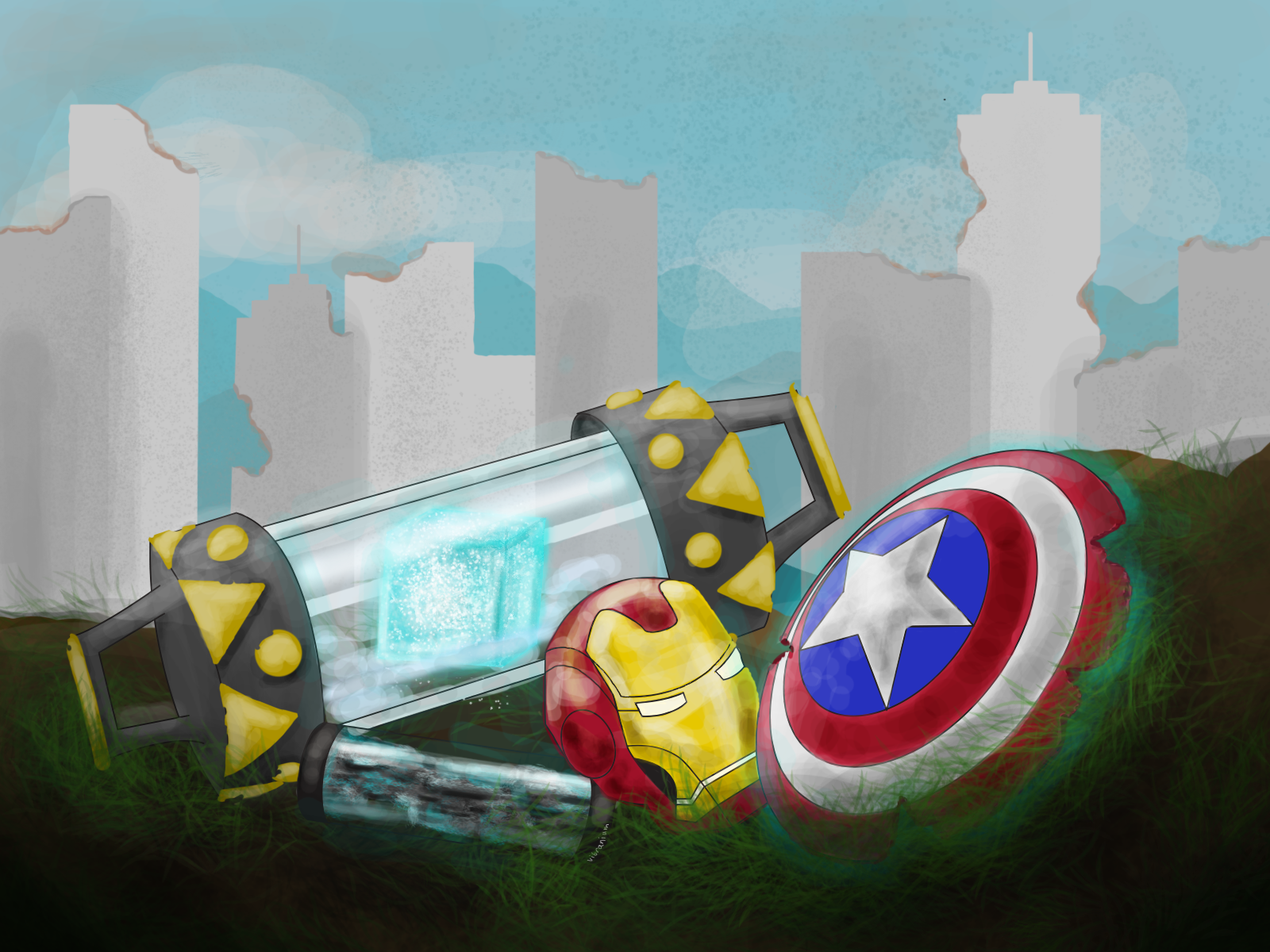Screening Science: How we’re comparing to the technology of the ‘Avengers’

(Anh-Vy Pham/Daily Bruin)
By Ethan Pak
April 25, 2018 11:23 p.m.
Ten years of action, comedy and drama will culminate in one epic battle.
Releasing Friday, “Avengers: Infinity War” pits our beloved Marvel Cinematic Universe superheroes against Thanos in a dramatic showdown. While Thanos attempts to procure the six infinity stones to bring devastation to the universe, the Avengers and their allies will vie to stop him, potentially putting their lives on the line.
But before the heroes can assemble and save the universe, they need to make sure their trusty gear is ready to go. Captain America’s vibranium shield, Falcon’s winged suit and Ant-Man’s shrinking costume will be essential in taking down the intergalactic antagonist. And the science that goes behind the gear has to be just right.
According to the lore, vibranium is an indestructible material that landed on Wakanda as a meteorite and embedded itself into the land’s soil. The people of Wakanda used the alien material to advance their society, and Howard Stark managed to procure some, using it to create Captain America’s iconic shield in “Captain America: The First Avenger.” The shield is said to absorb energy, which in turn makes the intermolecular bonds within the shield stronger, rendering it effectively impenetrable.
The science behind the shield is not in complete opposition to current academia. Metals like magnesium and iron-based alloys are also very strong because of their ability to absorb energy from impact. However, because energy cannot be created or destroyed, if not all of the energy is absorbed, it has to be converted into another form, usually heat. Captain America’s shield follows this fundamental law when Thor smacks it in “The Avengers,” releasing a burst of blinding light and energy that flings them across the forest.
Surprisingly, “vibranium” actually exists. Used as carbon-fiber coating for the hyperloop pods, this vibranium is 10 times stronger than steel and eight times stronger than aluminum, according to Hyperloop Transportation Technologies. The only unreal aspect of Captain America’s shield – apart from the fact that it doesn’t exist – is that it can absorb enormous amounts of energy from objects like the gunshots Peggy Carter once fired at it in “Captain America: The First Avenger.” The closest material that can match vibranium’s resilience today is titanium, since it is both lightweight and strong.
Similarly, Falcon’s winged suit is also entirely plausible in today’s scientific world. It utilizes ornithopter and jetpack technology, both of which have been showcased in North America.
In the 1950s, Wendell F. Moore of Bell Aerosystems developed the Small Rocket Lift Device – a backpack that could lift a soldier into battle for 20 seconds. In the 1990s, the American Rocket Belt Corporation improved on previous jetpack designs and managed to extend the flight time from 20 seconds to 30 seconds.
Then, in 2010, Canadian engineer Todd Reichert went in a different direction by trying to incorporate the structure of bird wings into flight with his ornithopter, albeit to no avail. He achieved a flight time of 19.3 seconds, attributing his failure to his ornithopter which lacked complexity in comparison to a bird’s wings. While the Falcon’s wings also lack the same kind of complexity and are more rigid, his suit does contain three mini jet engines that provide around 1,000 pounds of thrust – enough to theoretically lift him off the ground and sustain him in the air for a significant amount time during battle.
Ant-Man’s suit, however, is far more out of reach given current scientific advancements. It also poses incredible physiological concerns. According to Galileo’s square-cube law, when an object shrinks in size, its density and strength decrease more slowly than its volume does. Thus, if Ant-Man were to shrink in the real world, he would still retain the strength of his full-sized self.
Not to mention, he would also have major breathing problems. When shrunken down, his body mass would likely stay the same, meaning that he would still have the same metabolic and oxygen demands as when his body is fully grown. With smaller lungs in ant form, Scott Lang would have an incredibly difficult time just trying to stay alive.
The most similar technology to the suit that researchers have today is a “shrinking device,” engineered by a team from Southeast University in Nanjing, China. While the device doesn’t physically shrink objects, it bends light in a way that makes objects appear smaller than they are, in contrast to Ant-Man’s suit, which does physically shrink the user.
From Captain America’s shield to Ant-Man’s suit, some of our analogous technologies are not far off. “Vibranium” is currently implemented in hyperloop prototypes, and engineers have already developed jet packs, disregarding the flight time. But, whatever “science” our superheroes’ equipment actually integrates, let’s just hope it remains functional enough to ultimately defeat Thanos.

